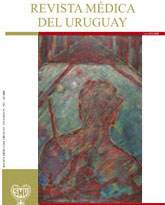Evaluación del riesgo en eventos adversos
Resumen
La Administración de Veteranos ha desarrollado criterios que nos permiten graduar la severidad de un evento adverso y la probabilidad de su recurrencia.
Categorías por probabilidad:
1. Frecuente: ocurren reiteradamente, se repiten cada cortos períodos.
2. Ocasionales: ocurren varias veces cada uno o dos años.
3. Infrecuente: pueden ocurrir algunas veces en dos a cinco años.
4. Remoto: ocurren alguna vez en dos a cinco años.
Categorías por consecuencias:
1. Catastrófica: muerte iatrogénica o pérdida permanente de una defunción debido al evento analizado.
2. Mayor: alteración en la función o en la fisonomía de un paciente, necesidad de intervención quirúrgica o prolongación de la estadía o mayor nivel de cuidado.
3. Moderada: incremento en la estadía, mayores gastos, mayor necesidad de monitoreo.
4. Menor: no hay injuria, no requiere tratamiento, pérdida de utilidad para la institución sin daño al paciente.
Citas
(Ordenadas por fecha de publicación)
Wilson RM, Runciman WB, Gibberd RW, Harrison BT, Newby L, Hamilton JD.
The Quality in Australian Health Care Study. Med J Aust 1995; 163(9): 458-71.
Great Britain Chief Medical Officer. Great Britain Deparment of Health.
An organization with a memory: report of an expert group on learning from adverse events in the NHS. London: Deportment of Health, Stationery Office, 2000.
Wu, AW. Medical error: the second victim. The doctor who makes the mistake needs help too. BMJ 2000; 320(7237): 726-7.
Institute of Medicine. Kohn L, Corrigan J, Donaldson M, eds. To err is human: building a Safer Health System. Washington, D.C: Nacional Academy Press, 2000.
Institute of Medicine. Crossing the quality chasm. A new Health System for the 21st century. Washington, D.C: Nacional Academy Press, 2001.
Vincet C, Neale G, Woloshynowych M. Adverse events in British hospitals: Preliminary retrospective record review. BMJ 2001; 322(7285): 517-9.
Baker GR, Norton PG, Flintoft V, Blais R, Brown A, Cox J, et al. The Canadian Adverse Events Study: the incidence of adverse events among hospital patients in Canada. CMAJ 2004; 170(11): 1678-86.
Aranz JM, Aibar C, Vitaller J, Ruiz P. Estudio nacional sobre los efectos adversos ligados a la hospitalización ENEAS 2005. Madrid: Ministerio de Sanidad y Consumo; 2006.
Vincent, Charles. Patient Safety. Edinburgh: Elsevier, 2006.
Runciman WB, Merry A, Walton M. Safety and ethics in healthcare. Aldershot: Ashgate, 2007.
Volpp KG, Landrigan CP. Building physician work hour regulations from first principles and best evidence. JAMA 2008; 300(10): 1197-9.
Watcher, Robert. Understanding Patient Safety. New York: Mc Graw Hill, 2008.
España. Ministerio de Sanidad y Política Social. Estudio IBEAS: Prevalencia de Efectos Adversos en Hospitales de Latinoamérica. Madrid: Ministerio de Sanidad y Política Social, 2009.
López L, Weissman JS, Schneider EC, Weingart SN, Cohen AP, Epstein AM. Disclosure of hospital adverse events and its association with patients ratings of the quality of care. Arch Intern Med 2009; 169(20): 1888-94.
Wachter RM. Entering the second decade of the patient safety movement: the field matures: comment on «disclosure of hospital adverse events and its association with patients ratings of the quality of care». Arch Intern Med 2009; 169(20): 1894-6.
Longtin Y, Sax H, Leape LL, Sheridan SE, Donaldson L, Pittet D. Patient participation: current knowledge and applicability to patient safety. Mayo Clin Proc 2010; 85(1): 53-62.
O'Leary KJ, Kulkarni N, Landler MP, Jeon J, Hahn KJ, Englert KM, et al. Hospitalized patients understanding of their plan of care. Mayo Clin Proc 2010; 85(1): 47-52.














